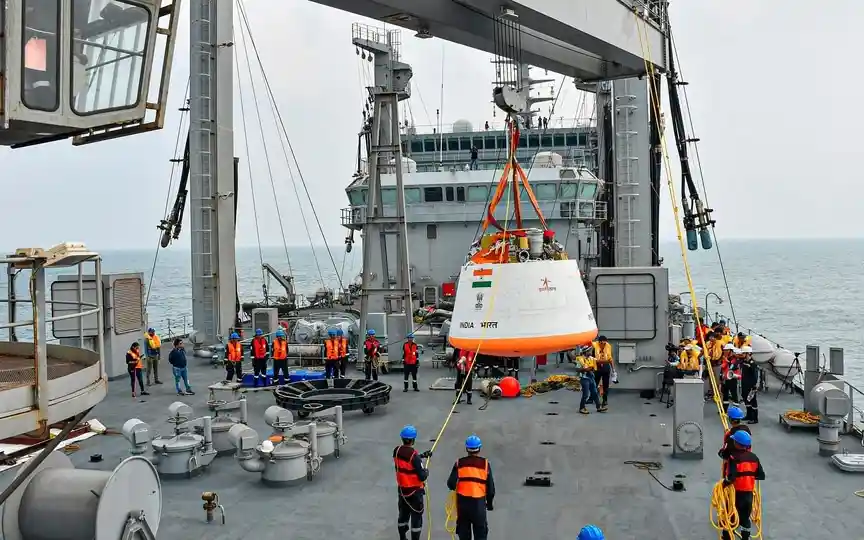Ready for Blastoff: India’s Gaganyaan Mission Test Flight!
The Indian Space Research Organisation (ISRO) plans to conduct a significant test on the crew module’s stability during splashdown in the sea for its upcoming Gaganyaan mission. This decision follows an incident during the TV-D1 mission on October 21, where the crew module, intended for ISRO’s first human spaceflight, unexpectedly flipped over during recovery in the Bay of Bengal. The aim is to enhance astronaut safety for the mission.
Stand-up system
To meet this challenge, ISRO is gearing up for the second test mission (TV-D2) planned for next year, which will precede the full unmanned test flight of the crew module into space using the LVM3 rocket as part of the Gaganyaan mission. S Shivakumar, the TV-D1 mission director, revealed that one of the critical systems being tested is a “vertical righting system” designed to prevent the crew module from tipping over after a splashdown, The Indian Express reported.
Explaining the mechanism, Shivakumar likened it to gaseous balloons or car airbags. If the crew module tilts, this system is triggered and returns the module to an upright position. The TV-D1 mission revealed stability challenges, particularly in the face of crosswind and sea wave disturbances, which created the need for such a corrective system.
Ensuring dismissals for the success of the task
In addition, the crew module has redundancy systems that ensure the functionality of the primary vertical system. Shivakumar emphasized the importance of effective functioning of recovery aids such as beacons underwater and the successful removal of seawater paint to mark the landing area.
Future test vehicle mission
The test vehicle’s next mission, scheduled for the first quarter of next year, will simulate a variety of conditions, including crew seating systems, suspension systems and vertical system performance. Notably, the crew escape system includes both low- and high-altitude escape engines, distinguishing it from the TV-D1 mission.
While the TV-D1 mission was a success, Shivakumar emphasized the importance of the upcoming TV-D2 mission, which will test a crew module that more closely resembles the final design. The focus is on simulating critical elements such as crew seats, control systems and flotation systems, marking a crucial step forward in ISRO’s preparations for the historic Gaganyaan mission.




